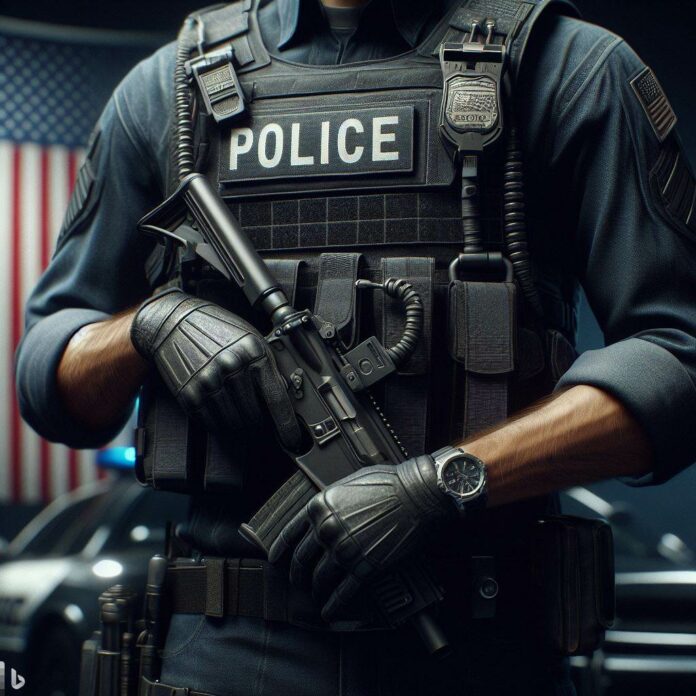Bulletproof vests play a crucial role in the safety and protection of law enforcement officers. These vests provide a layer of defense against potentially life-threatening situations, safeguarding officers from ballistic threats.
Understanding the key factors to consider when choosing a bulletproof vest is paramount to ensure maximum safety and effectiveness in the line of duty.
Firstly, it is essential to comprehend how a bulletproof vest works. These vests are designed to absorb and disperse the impact energy of a bullet, reducing the severity of injury.
Different types of bulletproof vests are available, each offering varying levels of protection based on the specific needs and requirements of the wearer.
When selecting a bulletproof vest, several factors should be taken into consideration. The protection level is of utmost importance, as it determines the capability of the vest to withstand specific threats.
Comfort and fit are also vital factors, as officers need to wear the vest for extended periods.
The weight and mobility of the vest should be considered to ensure ease of movement during active duty. Durability, threat level assessment, and cost are important factors to evaluate when making a selection.
Proper maintenance and care of bulletproof vests are crucial to prolong their effectiveness and lifespan. Regular inspections, cleaning, and following manufacturer guidelines are essential for optimal performance.
It is imperative that law enforcement officers receive proper training on wearing and utilizing bulletproof vests effectively to maximize their protection potential.
Understanding Bulletproof Vests
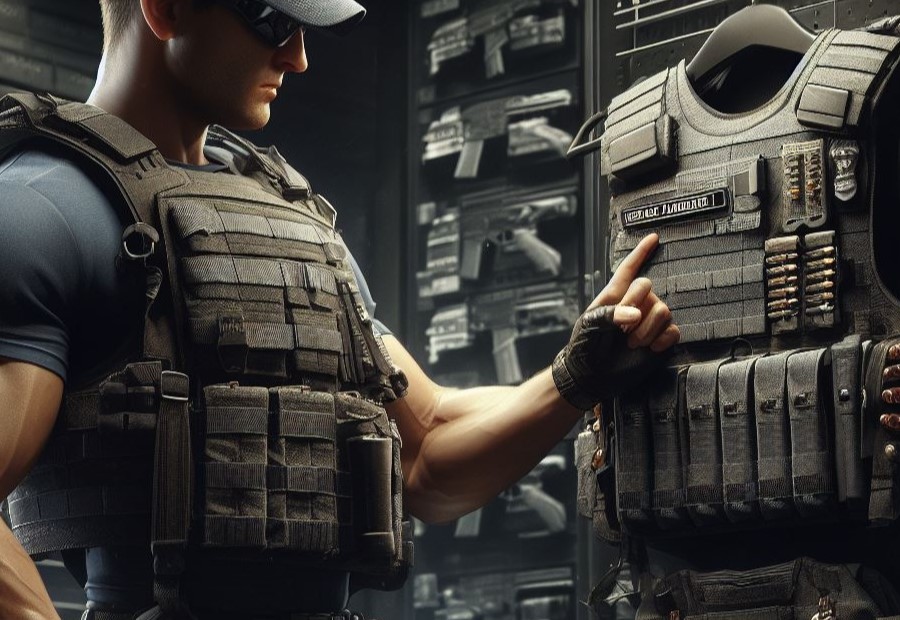
Bulletproof vests are crucial for law enforcement officers as they are designed to protect them from bullets and other ballistic threats. It is important for officers to have a good understanding of bulletproof vests in order to choose the right level of protection.
There are different types of bulletproof vests available, including soft armor vests and hard armor vests. These vests are rated according to their ability to stop bullets, with the most common rating system being the National Institute of Justice (NIJ) standards. The NIJ standards range from Level IIA to Level IV.
Bulletproof vests are made from various materials, such as Kevlar or Spectra. These materials are specifically designed to absorb and disperse the energy of a bullet upon impact.
In addition to protection, comfort and fit are also important factors to consider when choosing a bulletproof vest. It is crucial for a vest to fit properly and be comfortable enough for officers to wear for long periods of time.
Regular inspection and maintenance of bulletproof vests is essential to ensure they remain in good condition and provide the necessary protection.
By understanding the different types, levels of protection, materials, comfort, fit, and maintenance of bulletproof vests, law enforcement officers can make informed decisions when choosing the right vest for their specific needs.
This will ensure that officers have the best possible protection while on duty.
How Does a Bulletproof Vest Work?
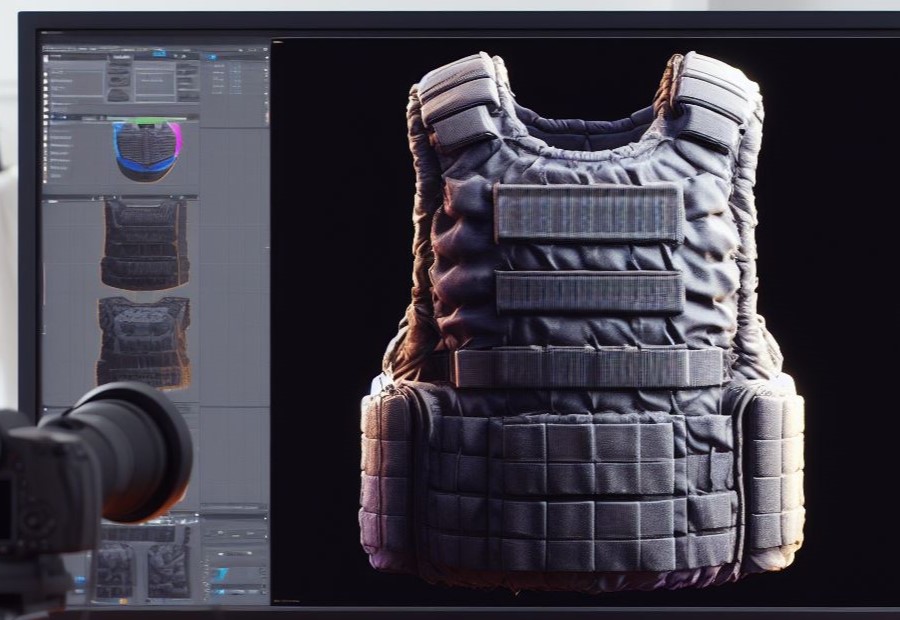
A bulletproof vest, also known as a ballistic vest, operates by using layers of strong materials, such as Kevlar or Dyneema, to effectively inhibit or diminish the impact of bullets.
These specially designed materials have the capability to absorb and distribute the energy from a bullet, thereby preventing it from penetrating the wearer’s body.The construction of the vest involves multiple layers, each fulfilling a specific purpose in halting the bullet’s trajectory.
Typically, the outer layer of the vest is constructed from a durable fabric or synthetic material that furnishes additional safeguard against abrasions and wear. Positioned within is the inner layer containing the bullet-stopping material, like Kevlar.
This particular layer is intended to effectively absorb and disperse the energy of the bullet, thereby mitigating the force inflicted on the wearer.
In certain instances, bulletproof vests may encompass supplementary layers of rigid materials, such as ceramic or metal plates. These additional layers aim to augment protection against high-velocity or armor-piercing rounds.
It is essential to acknowledge that while a bulletproof vest can significantly decrease the risk of injury or fatality from bullets, it does not render the wearer completely invulnerable. The effectiveness of the vest is contingent upon various factors, including the type of bullet, its velocity, and the distance from which it is fired.
Types of Bulletproof Vests
| Soft Body Armor | This type of bulletproof vest is made from flexible materials such as Kevlar or Dyneema. It offers protection against handguns and shrapnel. |
| Hard Plate Carrier | This vest consists of a carrier and hard plates made from materials like ceramic or steel. It provides a higher level of protection against rifle rounds. |
| Tactical Vest | A versatile vest designed for law enforcement and military personnel. It has pockets and attachments for carrying equipment and ammunition. |
| Concealable Vest | A vest that can be worn underneath clothing, providing discreet protection without drawing attention. It is commonly used by undercover agents or detectives. |
| Stab Proof Vest | This vest is specifically designed to protect against knife or stab attacks. It has additional layers of materials to prevent penetration. |
Factors to Consider When Choosing a Bulletproof Vest
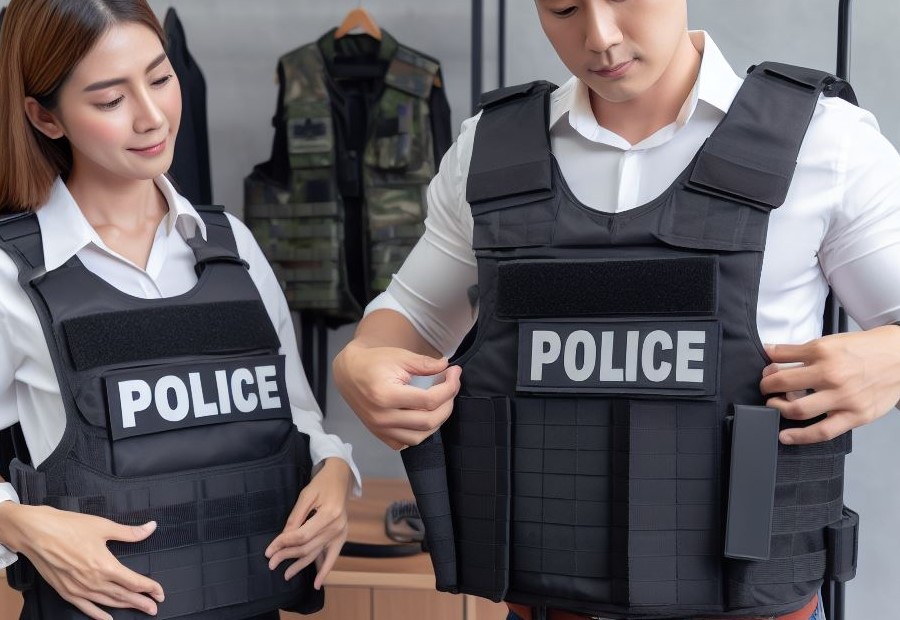
When it comes to choosing a bulletproof vest for law enforcement, there are several important factors to consider. From protection level and comfort to weight and mobility, durability, threat level assessment, and cost, each sub-section plays a crucial role in making an informed decision.
So, buckle up and dive into the world of choosing the right bulletproof vest that ensures your safety without compromising on other essential aspects.
Protection Level
| Protection Level | |
| Protection Level | Description |
| Level IIA | Provides basic protection against low-velocity handgun rounds like 9mm and .40 S&W. |
| Level II | Offers better protection than Level IIA and safeguards against higher velocity handgun rounds including .357 Magnum and 9mm ammunition fired from longer barrels. |
| Level IIIA | Commonly used by law enforcement, Level IIIA protects against high-velocity handgun rounds like .44 Magnum and .357 SIG. It also provides defense against most shotgun rounds. |
| Level III | Provides a higher level of protection against rifle rounds such as 7.62x39mm and .223 Remington. However, it may be less comfortable to wear. |
| Level IV | Mainly used by military personnel and special forces, Level IV offers the highest level of protection and can stop armor-piercing rifle rounds like .30-06 M2 AP and .338 Lapua. |
Comfort and Fit
When considering comfort and fit while choosing a bulletproof vest, it is essential to prioritize the following aspects:
- The vest should be adjustable to ensure a snug fit and maximum comfort for the wearer.
- It should have ergonomic design features that allow for ease of movement and flexibility.
- The vest should have proper weight distribution to prevent strain or discomfort during extended wear.
- Consider the material and padding used in the vest to ensure optimal comfort against the body.
- Select a vest with adjustable straps and closures to ensure a customizable fit for different body sizes.
Weight and Mobility
| Weight and Mobility |
| When selecting a bulletproof vest for law enforcement, the crucial factors to consider are weight and mobility. |
| 1. Weight: The weight of the vest is of utmost importance as it can significantly impact the comfort and performance of an officer. It is advisable to choose a lightweight vest, weighing approximately 5-7 pounds, which allows for easy movement and prevents fatigue during long duty hours. |
| 2. Mobility: The vest should provide freedom of movement, enabling officers to effectively carry out their duties. A vest with adjustable straps and panels ensures a better fit and flexibility. It is crucial to ensure that the vest does not limit the range of motion, particularly in critical areas like the shoulders and arms. |
| 3. Balance: The weight distribution of the vest should be evenly balanced, achieved through proper adjustment of the straps and shoulder pads. This promotes comfort, prevents strain on the back and neck, and enhances overall performance. |
| 4. Flexibility: The vest’s construction materials should be flexible to facilitate easy body movement. Utilizing a combination of lightweight and flexible materials, such as Kevlar or other ballistic fibers, is ideal as it ensures both protection and mobility. |
| 5. Size: Selecting the correct size of the vest is crucial for optimal mobility. A properly fitted vest not only offers comfort but also enhances agility and coordination during critical situations. |
Durability
The durability of a bulletproof vest is a critical factor to consider when choosing one for law enforcement purposes. A durable vest ensures that it can withstand repeated use and protect the wearer effectively.
| Factors to Consider | Details |
| Materials | The materials used in the construction of the vest contribute to its durability. Vests made from high-quality fabrics and reinforced with strong fibers like Kevlar or Dyneema are known for their durability. |
| Stitching and Seams | The stitching and seams of the vest should be securely done to ensure long-lasting performance. Double or triple stitching is often preferred to enhance durability. |
| Resistance to Wear and Tear | The vest should be able to withstand abrasions, impacts, and rough usage. It should maintain its structural integrity even after exposure to challenging conditions. |
| Testing and Certification | Look for vests that have undergone rigorous testing and meet recognized ballistic standards. Certified vests are more likely to be durable and reliable. |
| Maintenance Requirements | Proper care and maintenance are essential for preserving the durability of a bulletproof vest. Follow manufacturer guidelines for cleaning, storage, and regular inspections. |
Considering the durability aspect allows law enforcement personnel to have confidence in their vest’s ability to withstand extreme conditions and provide reliable protection when it matters most.
Threat Level Assessment
Threat level assessment is a crucial factor to consider when choosing a bulletproof vest. It involves evaluating the level of danger or risk an individual may face in their line of work. Law enforcement officers may encounter different types of threats, such as handguns, rifles, or edged weapons.
The ballistic resistance of a bulletproof vest should be matched to the specific threats an officer may encounter. The National Institute of Justice (NIJ) provides guidelines for threat level classifications, ranging from IIA to IV.
A vest rated for a higher threat level will offer greater protection but may also be heavier and less comfortable to wear. It is important to assess the specific needs of the job and strike a balance between protection, comfort, and mobility.
According to the NIJ, Level IIIA vests can provide protection against most handgun threats, while Level III and IV vests are designed to stop rifle rounds.
Cost
The cost of a bulletproof vest is a crucial factor to consider when selecting one for law enforcement. Balancing cost with the level of protection offered by the vest is essential.
Below is a table summarizing the cost ranges of various types of bulletproof vests:
| Type of Vest | Cost Range |
|---|---|
| Level IIa | $300 – $600 |
| Level II | $400 – $800 |
| Level IIIa | $500 – $1,200 |
| Level III | $800 – $1,500 |
| Level IV | $1,000 – $2,000 |
When evaluating the cost, it is important to bear in mind that higher protection levels generally correspond to a higher price tag. The cost of bulletproof vests can vary depending on the brand, materials used, and additional features like trauma plates or carrier options.
Law enforcement agencies should allocate a sufficient budget to ensure officers have access to dependable and efficient bulletproof vests. The cost should be regarded as an investment in the safety and well-being of the officers.
Moreover, it is important to regularly assess and replace vests as they have a limited lifespan to ensure optimal performance.
Proper Maintenance and Care of Bulletproof Vests
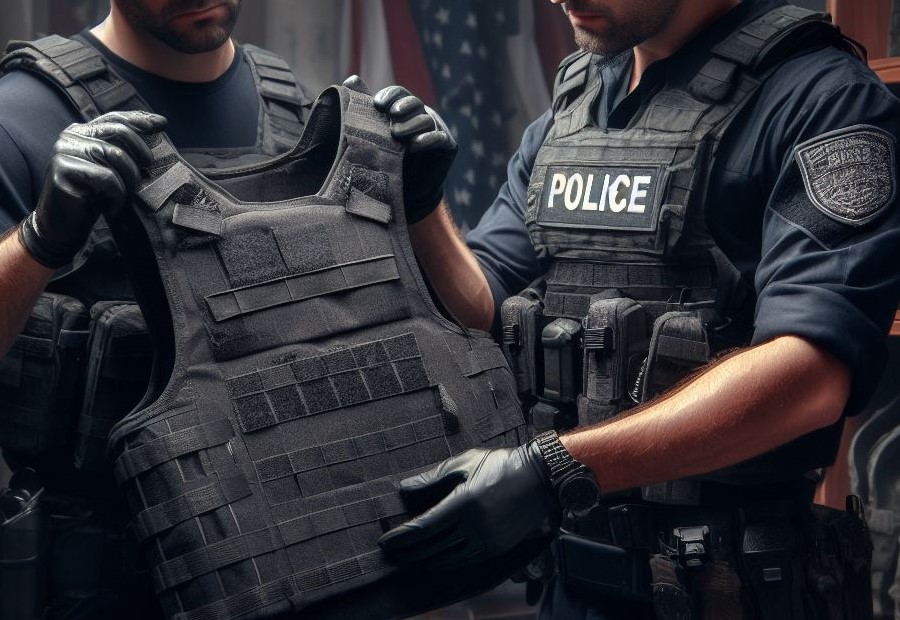
Proper maintenance and care of bulletproof vests is essential to ensure optimal performance and longevity. Here are some important steps to follow:
- Regular inspections: Check your vest for any signs of damage or wear. Look for loose stitches, tears, or discolored areas.
- Cleaning: Follow the manufacturer’s instructions for washing your vest. Use mild soap and water to gently clean the surface. Avoid using harsh chemicals or abrasive materials that could damage the protective fibers.
- Storage: Store your vest in a cool, dry place away from direct sunlight. Avoid folding or creasing the panels, as this can weaken the protective layers.
- Proper handling: When wearing or removing your vest, handle it with care to prevent unnecessary stress or damage. Avoid pulling or tugging on straps or fasteners.
- Replace damaged parts: If you notice any significant damage or wear on your vest, contact the manufacturer or a certified professional for repairs or replacement.
Pro-tip: Bulletproof vests have an expiration date due to the natural degradation of the materials over time. It is important to follow the manufacturer’s recommendations and replace your vest when it reaches its expiration date, even if it appears to be in good condition.
The Importance of Proper Training
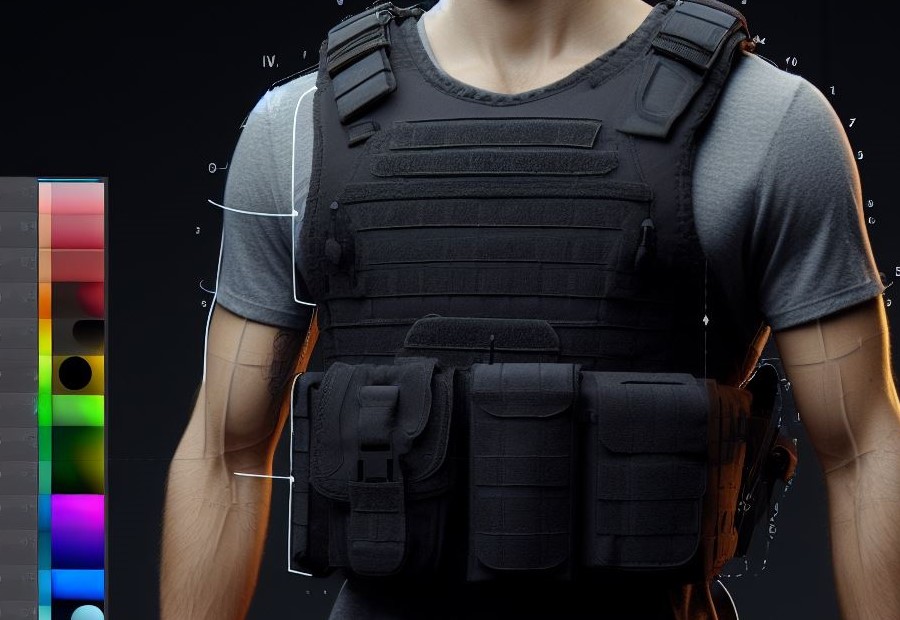
Proper training is of utmost importance when it comes to choosing and using a bulletproof vest for law enforcement. Training enhances proficiency in handling the vest and ensures that officers understand how to effectively use it in various situations.
It is crucial for officers to be trained in correctly donning and adjusting the vest to optimize its protective capabilities. Additionally, proper training cultivates a heightened sense of situational awareness and enables officers to make quick and accurate decisions in high-stress scenarios.
Without proper training, even the best vest may not provide the desired level of protection. To ensure optimal training, law enforcement agencies should develop comprehensive training programs that cover the correct usage and maintenance of bulletproof vests.
These programs should include practical exercises that simulate real-life situations officers may encounter and provide them with the opportunity to practice using the vest effectively. Regular refresher courses and ongoing training are also essential for officers to stay updated on the latest techniques and safety measures.
The importance of proper training cannot be overstated in ensuring the safety and effectiveness of law enforcement personnel.
Frequently Asked Questions
1. How do I choose the right bulletproof vest for law enforcement?
To choose the right bulletproof vest for law enforcement, consider the level of protection required, such as NIJ Level IIA, II, or IIIA. Take into account the specific needs of your job, such as patrol scenarios or active shooter situations.
Also, consider factors like comfort, sizing, weight, mobility, concealability, and cost. It’s important to find a vest that fits properly and provides adequate coverage for vital organs.
2. What is the difference between ballistic-resistant and stab-resistant body armor?
Ballistic-resistant body armor is designed to protect against handgun threats but not edged or spike type weapons. Stab-resistant body armor, on the other hand, is designed to protect against edged or spike type weapons but not handguns.
It’s crucial to check the armor panel label to determine the type of protection it provides. If the label does not specify a certain type of protection, then the armor does not provide that type of protection.
3. What are the testing requirements for different types of body armor?
New and unworn Type IIA, Type II, and Type IIIA armor are tested against two types of ammunition. However, Type III and Type IV hard armor or plate inserts are only tested against a single type of ammunition.
It’s important to be aware of the testing limitations of your body armor and understand the specific type of threats it can protect against.
4. Can a bulletproof vest protect against stab or slash attacks?
No, bulletproof vests are primarily designed to protect against bullets and explosive fragments. They may not be effective against stab or slash attacks. If protection against edged or spike type weapons is required, it’s necessary to use stab-resistant body armor specifically designed for such threats.
5. Can a bulletproof vest protect against stun guns?
No, bulletproof vests are not designed to protect against stun guns or electrical weapons. They are primarily designed to stop bullets and explosive fragments from penetrating the body.
6. Are there combination armors that provide protection against both handguns and edged/spike type weapons?
Yes, there are a few NIJ compliant combination armors that provide protection against both handguns and edged/spike type weapons. However, it is crucial to check the armor panel label to determine the type of protection it provides.
If the label does not specify a certain type of protection, then the armor does not provide that type of protection.

